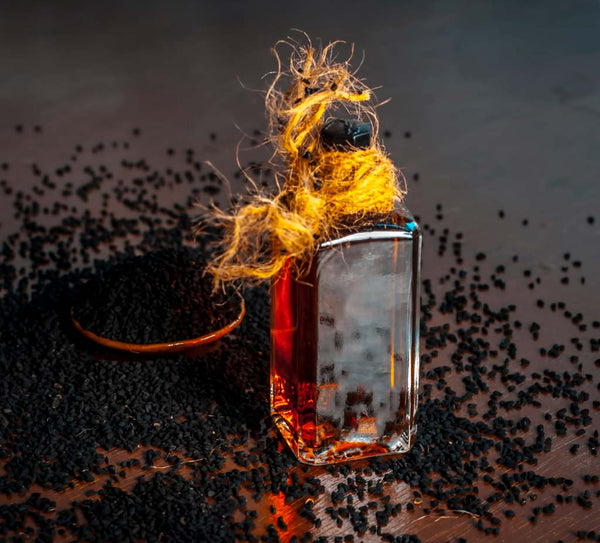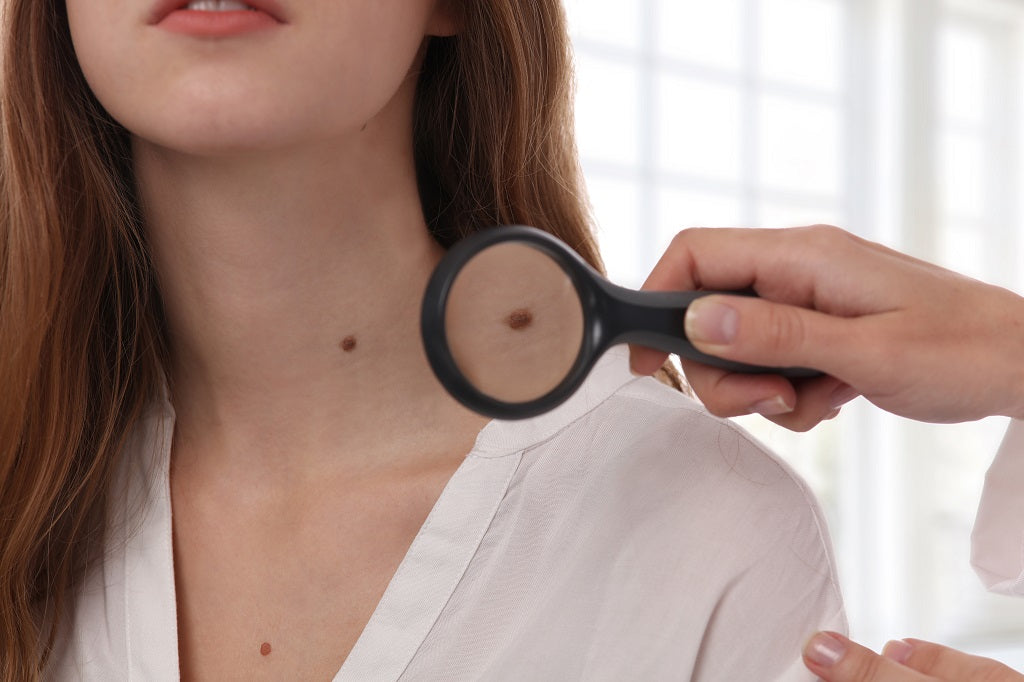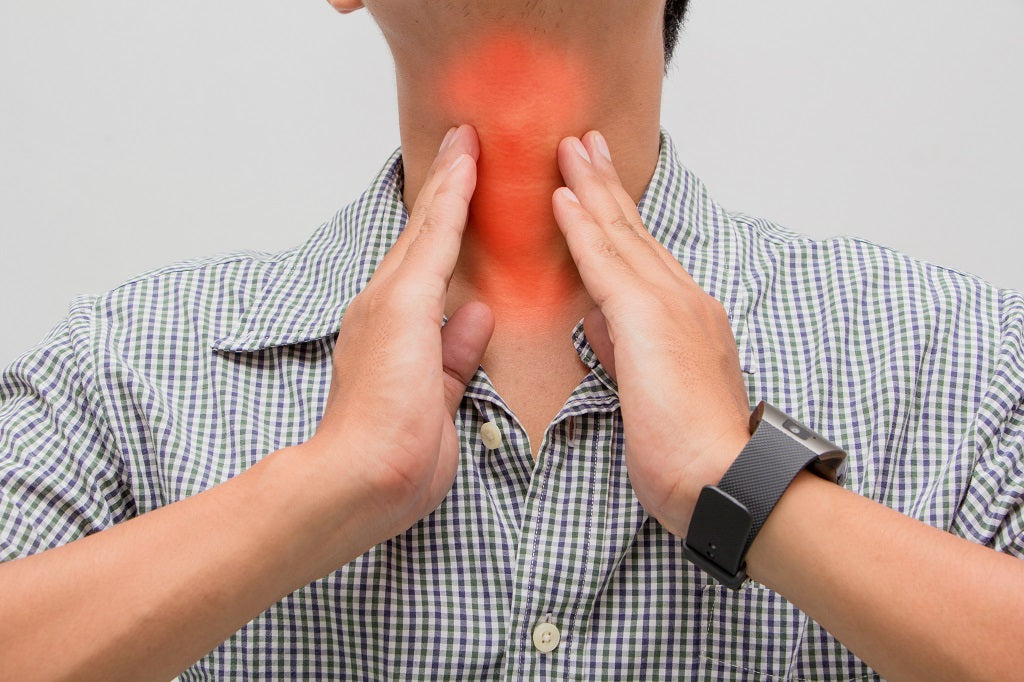Tired of skin troubles? You are not alone. Amidst the busy schedules we live in, it is difficult to focus on our health and nutrition as much as we should. Our wellbeing is dependent not only on how we take care of ourselves but also on our surroundings. With an increase in air pollution and ozone depletion, we are at a greater risk of getting skin related diseases. Over reliance on chemical based skin products is another cause. Along with these what we eat and drink also has an effect on our skin. Changing food habits have deprived deprive our bodies of the nutrition to keep our skin healthy.
Apart from these, many allergens in the environment cause damage to the skin which manifest as skin allergies.
What Is A Skin Allergy?
A skin allergy is the skin's reaction to an external allergen or an irritant. It could be harsh chemicals in the products we use or environmental pollution, allergen pollen grains, bacteria and germs. When these foreign elements come in contact with the skin, it leads to the production of antibodies by the body to overcome and fight it. The allergic reaction may appear as rashes on the skin and is referred to as a skin allergy.
Causes Of Skin Allergies And Skin Rashes
There are many possible reasons behind skin allergies and rashes. Out of those, the following are significant and contribute to about 80% of all skin allergies and rashes. These are:
1. Contact Dermatitis
It is the reaction of the skin to the contact of external irritants, which leads to an itchy, scaly and inflamed area on the skin. The possible skin allergy causes for contact dermatitis could be:
- Chemical based beauty products
- Highly chemical concentrated home care products
- Contact of the skin with rubber, rough stones, elastic and latex
- Some prickly and poisonous plants like poison oak, poison ivy, and poison sumac are some of the skin allergy causes.
Also Read : Dermatitis - Types, Causes, Symptoms and Home Remedies
2. Common Skin Problems
Eczema
Also termed as atopic dermatitis, it is a kind of rash that is common with people suffering from asthma. With a scaly texture, this rash is often itchy and visibly red.
Psoriasis
One of the major skin allergy diseases, which causes red, inflamed, scaly and itchy rashes along the elbows, scalp, fingers, and other joints.
Seborrheic Eczema
Mainly concentrated in the scalp, it causes red and scaly patches of the skin. It causes dandruff and can spread to the ears, mouth and nose. It is called crib cap when babies suffer of it.
Ringworm
Ringworm is a fungal infection, which leads to skin allergies in a ring shape. It can occur anywhere in the body, and it is the same fungus that causes athlete's foot and jock itch.
Rosacea
A chronic skin disease with no proven causes, Rosacea causes a red rash mainly on the face.
Scabies
Tiny mites can cause a huge infestation of the skin. It burrows down the skin causing a bumpy face with an itchy rash.
Tick bites
They spread disease with bites and cause an inflamed red region at the area of the bite. Flea bites are quite similar to tick bites
Bed bug bites
Bed bugs are harmless as they do not spread disease, but their bites result in a red rash over the skin.
Diaper rash
A common skin irritation due to the friction between the diaper and the skin. Usually, the situation aggravates when left unnoticed in a dirty diaper for long hours.
3. Skin Problems In Children
Chickenpox
Caused by a virus, the chicken pox is witnessed with fever accompanied by blisters all over the body. These grow as red itchy ones and with appropriate treatment and time, decrease and dry out with again an itchy condition.
Measles
Measles is a respiratory infection associated with rubeola virus. It causes widespread itchy and red rashes in the form of bumps. It is one of the highly infectious diseases, which does not have any specific cure or treatment. It is significantly noted by the red rashes all over the body. Prevention is the only way to stay safe. It can be prevented through a vaccine.
Scarlet Fever
It is an infection caused by Group A Streptococcus bacteria. It produces a red rash which is bright in colour like sandpaper, very much evident on the tongue, throat, armpits, elbows and knees. It is associated with swollen tonsils and fever.
Fifth Disease
It causes flat red rashes over the face, especially the cheeks, upper arms and the legs, and it is caused by a viral infection. The face rash causes a dip in self-esteem.
Hand, Foot And Mouth Disease
It is a viral infection that causes red rashes on the mouth, hands and the feet.
Impetigo
A contagious fluid filled, itchy and crusty sores which dominate the face, neck, and hands. It is caused by a bacterial infection.
What Are The Signs And Symptoms Of A Skin Rash?
The common signs and skin allergy symptoms are
- Itchiness
- Dry skin
- Scaly patches on the skin
- Redness
- Small fluid-filled blisters
- Wounded areas that develop a skin infection
Ways To Treat Skin Allergy Naturally
Skin allergies are usually caused by a reaction to foreign substances, which are usually chemicals. Opting for natural and home remedies can heal the skin from within and help it rekindle its origin form.
Home remedy is often the best way to overcome the skin infections permanently.
1. Coconut Oil

Ingredients
100% extra pure coconut oil
Method
- Take the oil in a small bowl and slightly heat it to be lukewarm.
- Apply this oil onto the affected area and leave it for about half an hour.
- Let it be absorbed by the skin and wipe away the excess oil.
How Often To Do
Repeat this process 3 to 4 times in a day for a couple of days.
Benefits
Coconut oil is a natural pack of fatty acids with moisturizing, analgesic and anti-inflammatory properties. It helps to relieve redness and itching quickly.
2. Honey
Ingredients
2 or 3 teaspoons of organic honey
Method
- Apply the honey directly onto the affected area.
- Leave it for about half an hour.
- Let it be absorbed by the skin and later wash it with lukewarm water.
How Often To Do
Repeat this process 3 to 4 times in a day until you see the skin rash completely gone.
Benefits
Honey consists of a lot of anti-inflammatory and powerful immunoregulatory properties, due to which it quickly heals wounds and skin rashes, reducing the redness first. It also provides relief from itching.
3. Tulsi (Basil)

Ingredients
- 10-12 leaves of Tulsi
- A grinder
Method
- Pluck some fresh basil leaves from your garden and wash them.
- Grind them into a thick paste and apply it gently on the affected area.
- Leave it for about half an hour before you wash it with cool water.
How Often To Do
Repeat this process for a couple of days, until the problem recedes.
Benefits
Basil or Tulsi is known to be an anti-fungal, anti-microbial herb with vast benefits to heal the redness, scaly skin and the itchy sensation.
4. Essential Oils
Ingredients
- Pure peppermint oil
- 1 tablespoon of carrier oil like castor, coconut, jojoba oils
Method
- Mix about 2 to 3 drops of pure peppermint oil with the carrier oil.
- Gently massage it into the affected area.
- Leave it to be absorbed for 30 – 40 minutes and gently wipe away later.
How Often To Do
Repeat this process 2 times in a day for a couple of days.
Benefits
Methanol is a significant component of peppermint oil. It exhibits anti-inflammatory properties with a mild numbness. It helps in quick relief from pain and itchiness. Take your self-care game a notch higher with our stunning collection of pure essential oils that cater to all your haircare, skincare, holistic wellness needs.
Also Read : 10 Effective Essential Oils For Allergies
ANVEYA PURE ESSENTIAL OILS
5. Ginger

Ingredients
- 2 to 3 slices of ginger
- A small cup of water
- Cotton dab
Method
- Take the water with the slices of ginger in a small bowl and heat it to make it boil.
- Simmer it for about 5 minutes and cool it to be lukewarm.
- Using a cotton dab, apply this mixture to the affected area.
- Leave it for about half an hour. Let it be absorbed by the skin.
How Often To Do
Repeat this process 3 times a week for a speedy recovery from skin allergies.
Benefits
Ginger possesses excellent anti-inflammatory and anti-microbial properties, which soothe the inflamed skin and reduce the itchiness.
6. Lemon Juice
Ingredients
- Juice from one lemon
- Cotton dabs
- A small cup of water
Method
- Mix the lemon juice with the water in the bowl.
- Apply it on the affected area using a cotton dab.
- Let it air dry while it is absorbed by the skin.
How Often To Do
Repeat this process 3 to 4 times in a day until you see a normal skin again.
Benefits
With high acidity, it helps to cure fungal and bacterial infections fast. It might increase inflammation, so it is better to dilute it well before use to reduce the stinging.
7. Neem

Ingredients
- A handful of fresh neem leaves
- A grinder
Method
- Take the fresh neem leaves into the jar and grind it well with minimal water.
- Make a thick paste which gives a cool effect when applied to the affected area of the skin.
- Leave it on for about half an hour before washing it off with lukewarm water.
- Pat dry.
How Often To Do
Repeat this process 3 to 4 times a week to accelerate the recovery process.
Benefits
Neem is a natural antihistamine making it highly effective against skin allergies. It also has anti-microbial properties, which is effective in healing the redness, along with the itchy and scaly skin.
Also Read : 9 Benefits of Neem (Infographic)
8. Guava Leaves
Ingredients
- A couple of guava leaves
- A grinder
Method
- Wash the guava leaves and grind them into a running consistency by adding some water while you grind.
- Put it into a water tub and soak the affected area into the water.
- Another method is to grind it into a thick paste and put it on the affected area for about half an hour and wash later.
How Often To Do
Repeat this process 3 to 4 times in a week.
Benefits
Guava leaves have characteristic ethanolic extracts which possess powerful anti-inflammatory and anti-bacterial properties. It helps to heal the skin allergies and itchiness quickly.
9. Kalonji Oil Or Black Seed Oil

Ingredients
100% extra pure Black Seed oil (Or Kalonji oil)
Method
- Take the oil in a small bowl and slightly heat it to be lukewarm.
- Apply this oil onto the affected area and leave it for about half an hour.
- Let it be absorbed by the skin and wipe away the excess oil.
How Often To Do
Repeat this process 2 times in a day for a couple of days.
Benefits
The Black Seed oil has analgesic properties, along with it being anti-inflammatory and antipruritic. This is because of the presence of thymoquinone, which is highly effective against all kinds of skin allergies.
10. Apple Cider Vinegar
Ingredients
- One teaspoon of apple cider vinegar
- A cup of water
- Cotton pads
Method
- In a small bowl, add the apple cider vinegar and dilute it with sufficient amount of water.
- Using a cotton pad, gently spread it evenly over the affected regions of the skin.
How Often To Do
Repeat this process multiple times in a day until the skin heals completely.
Benefits
The apple cider vinegar has acidic properties which help overcome skin allergies due to bacteria or fungi. It accelerates the recovery process of skin allergies.
11. Vitamins

Have a balanced diet on a regular basis for good healthy skin, with good immunity.
Benefits
There are some essential vitamins which help in proper skin growth. Vitamin A, C and E, helps in to repair the damaged skin and improves the skin health with the anti-inflammatory properties.
12. Baking Soda
Ingredients
- One teaspoon of baking soda
- A small cup of water
Method
In a small bowl, add some baking soda with water to make a thick consistency.
Apply it on the affected area and leave it for 10 to 15 minutes before it washing it off.
How Often To Do
Repeat this process 2 times in a day.
Benefits
The highly alkaline nature of the baking soda helps to kill the microbial activity. It helps to heal all kinds of skin allergy within a few regular applications.
13. Aloe Vera

Ingredients
Method
- Cut some fresh aloe vera leaves and extract the gel.
- Apply it on the affected area of the skin allergy.
- Leave it on for half an hour and wash it with cool water.
How Often To Do
Follow this for a couple of times a week.
Benefits
With high healing properties, aloe vera gel accelerates the healing process and relieves from redness and itchiness.
How Can You Relive The Effects Of A Skin Allergy Inflammation?
1. Avoid Touching The Rash
With a skin allergy, it is essential to avoid further complications in the affected area. It is better to protect the area from external allergens, and avoid touching it.
2. Use Cold Compress
Running cool water over the skin allergy, cold compress, or even a cool shower can help reduce the itchiness and redness of the skin.
3. Use Colloidal Oatmeal
The colloidal oatmeal powder mixed well with water can be used to reduce inflammation of the skin. It helps to dry out the allergy and heal out the fluid-filled sores.
4. Wear Loose Clothes
To avoid the contact and irritation of the skin, avoid tight clothes over the affected the area. Wear loose clothes to prevent contact with the allergic area.
5. Try Damp Dressing In Case Of Severity
In case of severe skin infections with high sensitivity, try to cover the affected area with a damp dressing. It helps to cool the area and prevents the external contact.
Disclaimer: All the content on anveya.com/blogs is solely for information. It is not intended to be a substitute for professional medical advice, diagnosis or treatment. Always seek the advice of your physician or a qualified health care provider. The information, suggestion or remedies mentioned on this site are provided without warranty of any kind, whether express or implied.




